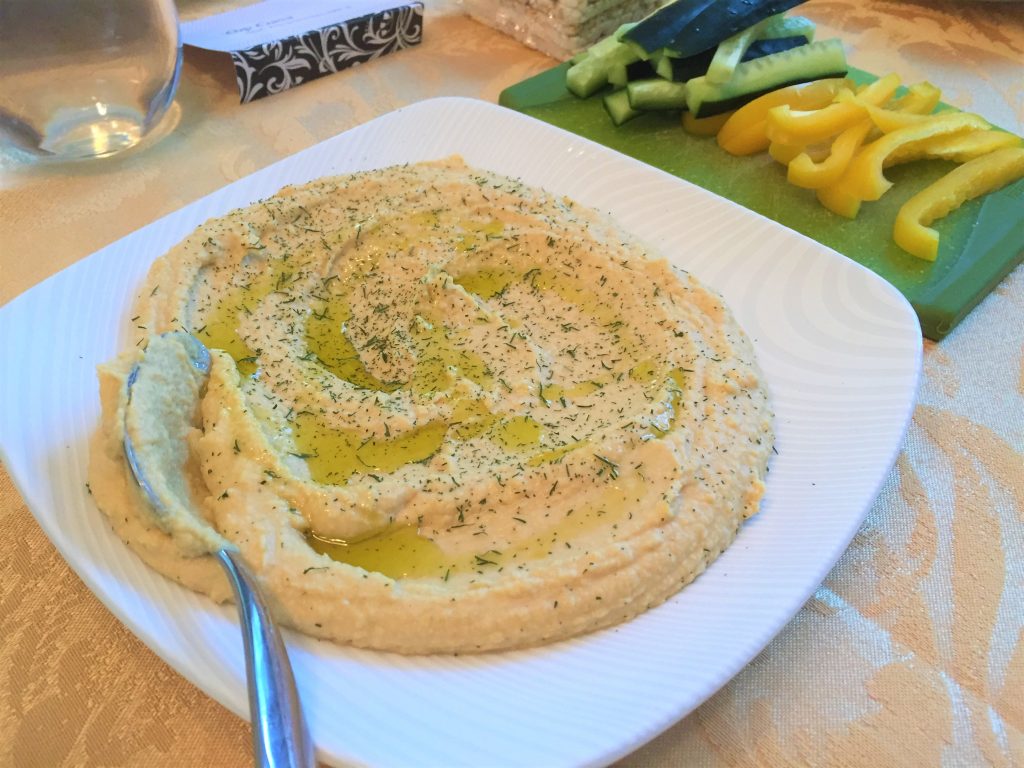
As many of you may know, I am currently working on the next-to-last class in my curriculum for my Master’s degree in Integrative Nutrition! It has been a life-changing … or should I say, diet-changing experience … to say the least.
I have learned the difference between a therapeutic diet and a lifelong eating pattern. On several occasions during my coursework, I have been challenged to experiment with a therapeutic diet (a diet implemented in the short-term to achieve an intended purpose, such as reduced blood pressure, reduced blood sugar, etc).
Most recently, I was tasked with the challenge of following the Institute for Functional Medicine’s “Mito Food Plan” and reflecting upon my experience. (Mito stands for Mitochondria, which are the energy- generating parts of the cells of the body, which are optimized on this diet.) Since I am currently breastfeeding and could not follow the diet exactly, since it involved carbohydrate restriction and mild calorie restriction, my loving husband agreed to try this therapeutic diet for 5 days. (I still got the experience of preparing all of the meals and eating lots of them too!)
According to the Institute for Functional Medicine (2016),
The Mito Food Plan may be described as an anti-inflammatory, low-glycemic, gluten-free, low-grain, high-quality fats approach to eating. The plan focuses on supporting healthy mitochondria through the use of therapeutic foods that improve energy production. Mitochondria are structures in every cell that make energy by using oxygen and nutrients from food. The cells in the brain, heart, nerves, muscles, and organs all have higher concentrations of mitochondria. These parts of the body are also more susceptible to a premature decline in function caused by a host of common insults. Harmful food choices can contribute to this decline, leading to poor health and chronic illness. The Mito Food Plan will support the body in the production of energy, restore a sense of vitality, and help the body use food to support a graceful and healthy aging process. The Mito food list can assist in preventing the development of chronic neurological disease by helping people to choose specific foods that enhance mitochondrial function.
(Institute for Functional Medicine, 2016)
I will share a brief overview of this food plan below. Please note that successful implementation involves working with a nutrition provider and is based on a 30-page comprehensive guide which outlines individual calorie, macronutrient, and micronutrient recommendations.
The Mito Food Plan encourages consumption of specific “therapeutic foods,” which have properties such as
- high in antioxidants
- anti-inflammatory compounds
- omega 3 fatty acids
- low glycemic
- low carbohydrate

Each food category has foods that should be eaten often and the health benefits are explained.
Protein:
“Protein helps stabilize blood sugar, which is important for brain health. This in turn minimizes hunger and cravings. Ideally, some protein should be included in every meal.” (IFM, 2016)
Therapeutic foods: wild Alaskan salmon, mackerel, sardines, cod, elk, venison, and grass-fed lamb, beef, and buffalo (bison)
Nuts & Seeds:
“While all nuts and seeds are healthy for the brain, this plan highlights those that are significant sources of beneficial omega-3 oils or brain-healthy MCTs. Be sure to buy nuts that aren’t heavily salted and roasted in oil. Eating a variety of nuts ensures getting a variety of phytonutrients.” (IFM, 2016)
Therapeutic foods: Almonds, walnuts, coconut, flaxseeds, chia seeds, hemp seeds, pumpkin seeds and their respective butters or pastes

Fats & Oils:
“It is important to include good-quality fats every day to help keep inflammatory processes in balance…. Minimally refined, cold-pressed, organic, non-GMO fats and liquid oils should be used whenever possible, as these will be the best quality.” (IFM, 2016)
Therapeutic foods: avocado, olives (black or green), olive oil (extra virgin, cold pressed), flaxseed oil, coconut oil (organic and virgin), coconut milk, ghee (clarified butter), and butter from the milk of grass-fed cows

Non-starchy Vegetables:
“This category is of utmost importance for providing the necessary phytonutrients that nourish the brain and antioxidants that protect the brain, supporting memory and cognition. There are more selections in this category than any other on the food plan… All greens (including collard, dandelion, kale, mustard, and turnip greens), along with chard/Swiss chard, spinach, sea vegetables, and the many green vegetables in the crucifer family have been found to support the mitochondria in the brain… Fermented vegetables, such as sauerkraut and kim chi, are also recommended for brain health; they have been shown to improve signaling between the gut and the brain.” (IFM, 2016)
Therapeutic foods: spinach, broccoli and all other cruciferous vegetables, seaweeds, asparagus, Swiss chard, daikon radish, beet greens, dandelion, okra, onion (garlic, scallion, leeks, shallot), fermented vegetables, sprouts

Fruits:
“Fruits are packed with phytonutrients. Fruits with a low to moderate glycemic response are a refuge when patients are feeling the need for something sweet… In addition to improving memory and cognition, blueberries contain one of the highest antioxidant levels of all fruits and also help with blood sugar control. Apples contain phytonutrients that suppress inflammation.” (IFM, 2016)
Therapeutic foods: apple, all berries (blueberries, blackberries, raspberries, strawberries, etc.), cherries, grapes, mango, pomegranate seeds

Beverages:
“Hydration helps rid the body of toxins, builds resilience to stress, enhances metabolism, and promotes satiety. It is important to drink plenty of clean, filtered water throughout the day. Individual recommendations for fluid intake will depend upon a number of factors including body weight.”
Therapeutic foods: water, green tea
Here’s What We Ate!!
Green Veggie Salad: Link to Recipe

Avocado Toast on Sprouted Ezekiel Bread

Chimichurri Salmon, Mashed Cauliflower, Sauteed Bok Choy

Pomegranate Spinach Salad: Link to Recipe

Turkey, Egg & Veggie Wrap on Swiss Chard

Slow Cooker Chicken Curry

Turkey Chili over Zoodles

Protein Spinach Salad with Fermented Veggies

And of course, a little bit of hummus 😉

How We Felt & What We Learned
Overall, Eric noticed very stable energy and a clear mind. I felt energized from all of the veggies & protein and I enjoyed the diversity of meals. We both drank lots of tea (Eric had green tea and I had white tea) which provided an additional gentle energy boost throughout the day! Also not pictured were the nuts & fruits we munched on throughout the day, which were quick & satisfying snacks!
After practicing this diet for several days, we will be making some shifts to our daily eating patterns. For example, instead of breakfast cereals with added sugars, Eric found that he loved avocado toast and hard boiled eggs in the morning! Some days we’ll mash up a fresh avocado and some days we’ll use pre-packaged guacamole. Either way, the quality fats in the avocado and protein in the eggs are great for the brain and so much better for blood sugar!
To conclude, this is an example of a therapeutic diet that is beneficial to achieve a specific goal. We have resumed our healthy, balanced long-term eating pattern which includes whole grains such as quinoa, millet, brown rice, and barley, but we will continue to eat generous amounts of the therapeutic foods featured in this diet plan and enjoy the tasty recipes we tried! 🙂

Reference
Institute for Functional Medicine (IFM). (2016). Mito food plan: Comprehensive guide. Retrieved from IFM Toolkit for MUIH MS and PhD Programs

You should explain the green tea-soaked hard boiled eggs (pictured with the avocado toast w/ microgreens) sometime and how they compared to regular hard boiled eggs!